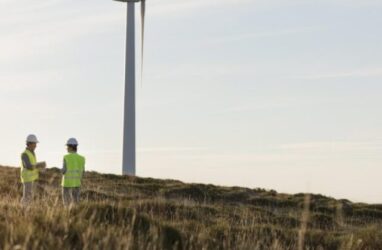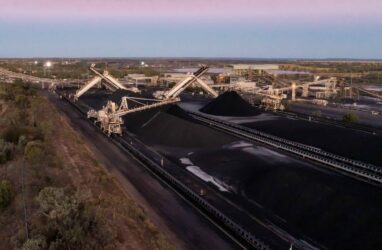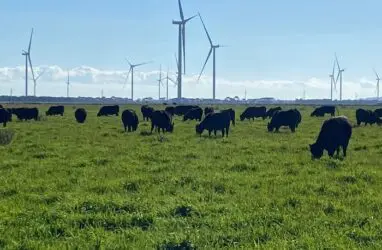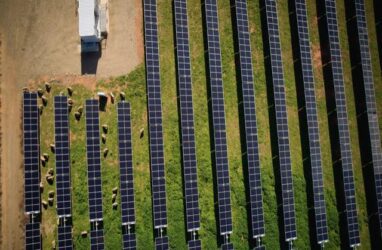Feed aggregator
Resisting fascism includes respecting our environment and fellow species | Terry Tempest Williams
I do not think it is a leap to see our exploitive relationship with Earth as part of a centuries-long war against the environment
Standing on the edge of Utah’s terminal Great Salt Lake is to witness the religion of over-water consumption in the desert. Our thirst is greater than this inland sea can bare as it is disappearing in the shadows of climate chaos, extreme heat and a megadrought not seen in 2,500 years. Twelve million migrating birds depend on this water body for food, rest and breeding. Flocks of Wilson’s phalaropes, small and handsome shorebirds, spin in saline waters creating water columns alive with brine shrimp and flies and resulting in a feeding frenzy. American avocets and black-necked stilts stand stoically in the shallows. Thousands of ducks are sprinkled on the lake like pepper. Water and sky merge as one. There is no horizon. All appears well in this serene landscape of pastel blues animated by birds. It is not.
The health of the Great Salt Lake is only as strong as the health of the human community that surrounds it. And vice versa. If the 2 million people living within the Great Salt Lake watershed with Salt Lake City at its center do not mobilize to put more water in the lake, the death of the Great Salt Lake will be their own. This will also be the demise of millions of migrating birds.
Terry Tempest Williams is a writer, naturalist and activist
Continue reading...Resisting fascism includes respecting our environment and fellow species | Terry Tempest Williams
I do not think it is a leap to see our exploitive relationship with Earth as part of a centuries-long war against the environment
Standing on the edge of Utah’s terminal Great Salt Lake is to witness the religion of over water-consumption in the desert. Our inland sea is disappearing in climate chaos evidenced by extreme heat and a megadrought not seen in 2,500 years. Ten million migrating birds depend on this water body for food, rest and breeding. Flocks of Wilson’s phalaropes, small and handsome shorebirds, spin in saline waters creating water columns alive with brine shrimp and flies and resulting in a feeding frenzy. American avocets and black-necked stilts stand stoically in the shallows. Thousands of ducks are sprinkled on the lake like pepper. Water and sky merge as one. There is no horizon. All appears well in this serene landscape of pastel blues animated by birds. It is not.
The health of the Great Salt Lake is only as strong as the health of the human community that surrounds it. And vice versa. If the 2 million people living within the Great Salt Lake watershed with Salt Lake City at its center do not mobilize to put more water in the lake, the death of the Great Salt Lake will be their own. This will also be the demise of millions of migrating birds.
Terry Tempest Williams is a writer, naturalist and activist
Continue reading...World Bank heralds gains in carbon pricing across emerging economies despite political, economic risks
CME releases details of upcoming ACCU futures contract
China clarifies rules to avoid double counting of environmental values from renewable projects
Australian govt earmarks A$215 mln for species protection, habitat restoration
European verifier seeks comments for new modular BiCRS methodology
Six ways to improve ecosystem outcomes of renewable energy
The post Six ways to improve ecosystem outcomes of renewable energy appeared first on RenewEconomy.
Next-Gen and Siemens partner to make battery materials in Australia
The post Next-Gen and Siemens partner to make battery materials in Australia appeared first on RenewEconomy.
Japanese oil major backs country’s first programme-based carbon project in pig farming
Australian states announce forestry, Indigenous ACCU initiatives
Scorched earth: how the search for gold has scarred DRC’s Haut-Uélé province
In the north-east of the Democratic Republic of the Congo, forests have been cleared for mines and the roads that service them. Large companies take what they can and move on, leaving abandoned ponds, toxic rivers and scraps of precious metal left in the ground
- Words and photographs by Guerchom Ndebo in Moku with support from the National Geographic Society
“We’re going to have to innovate the shit out of this:” Forum urges fresh thinking on climate
The post “We’re going to have to innovate the shit out of this:” Forum urges fresh thinking on climate appeared first on RenewEconomy.
European Energy extends its reach in Australia with purchase of two shovel-ready solar farms
The post European Energy extends its reach in Australia with purchase of two shovel-ready solar farms appeared first on RenewEconomy.
With a million home batteries, we could build far fewer power lines. We just need the right incentives
Prime farmland goes up for sale, with option to reap the harvest from 13 wind turbines
The post Prime farmland goes up for sale, with option to reap the harvest from 13 wind turbines appeared first on RenewEconomy.
Buried treasures: how seeds help us learn about fire in the Australian landscape
Victoria’s biggest solar farm cleared for construction in “heart of the Latrobe Valley,” huge battery included
The post Victoria’s biggest solar farm cleared for construction in “heart of the Latrobe Valley,” huge battery included appeared first on RenewEconomy.
Major global policy shift urged to boost CO2 removal efforts, meet climate goals
Giant tortoises in Seychelles face threat from luxury hotel development
Conservationists and botanists express concern over plans for Qatari-funded upscale resort on Assomption Island
The habitat of the largest giant tortoise population in the world is threatened by a Qatari-funded hotel development that aims to bring luxury yachts, private jets and well-heeled tourists to a remote island in the Indian Ocean, conservationists have warned.
Plans for an upscale resort on Assomption, which is part of the Aldabra island group, are currently under discussion by the Seychelles authorities, and construction is already finished on an airport expansion that would allow bigger aircraft to land on the 11.6-sq-km (4.5-sq-mile) coral island.
Continue reading...








